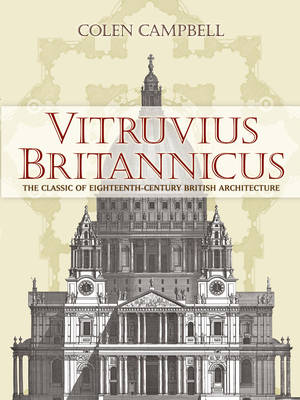
- Afhalen na 1 uur in een winkel met voorraad
- Gratis thuislevering in België vanaf € 30
- Ruim aanbod met 7 miljoen producten
- Afhalen na 1 uur in een winkel met voorraad
- Gratis thuislevering in België vanaf € 30
- Ruim aanbod met 7 miljoen producten
Zoeken
€ 29,45
+ 58 punten
Omschrijving
A consortium of British architects and their patrons rebelled against the early eighteenth century's Baroque excesses and turned instead toward the Renaissance works of Andrea Palladio for inspiration. These Neo-Palladians guided the course of British architecture toward classical principles, and the Vitruvius Britannicus (British Vitruvius) reflects their vision. A sumptuous collection of magnificent copperplate engravings, it depicts great English country houses and public buildings.
Published between 1715 and 1725 in a three-folio set, the Vitruvius Britannicus documents in meticulous detail many of the buildings from the previous two centuries. Its 300 illustrations include facades, ground plans, exterior elevations, and perspective views. Featured buildings include those designed by Inigo Jones, the seventeenth-century architect who introduced Palladianism to England; the work of Sir John Vanbrugh, whose innovative Classical-Revival architecture retained a Baroque flair; and contemporary designs, including those of the author, Scottish architect Colen Campbell.
The popularity of this volume fostered the development of the Neo-Palladian movement, and Vitruvius Britannicus continues to influence architects and designers. Handsome and modestly priced, this new edition is an essential complement to any design library.
Published between 1715 and 1725 in a three-folio set, the Vitruvius Britannicus documents in meticulous detail many of the buildings from the previous two centuries. Its 300 illustrations include facades, ground plans, exterior elevations, and perspective views. Featured buildings include those designed by Inigo Jones, the seventeenth-century architect who introduced Palladianism to England; the work of Sir John Vanbrugh, whose innovative Classical-Revival architecture retained a Baroque flair; and contemporary designs, including those of the author, Scottish architect Colen Campbell.
The popularity of this volume fostered the development of the Neo-Palladian movement, and Vitruvius Britannicus continues to influence architects and designers. Handsome and modestly priced, this new edition is an essential complement to any design library.
Specificaties
Betrokkenen
- Auteur(s):
- Uitgeverij:
Inhoud
- Aantal bladzijden:
- 288
- Taal:
- Engels
- Reeks:
Eigenschappen
- Productcode (EAN):
- 9780486447995
- Verschijningsdatum:
- 29/12/2006
- Uitvoering:
- Paperback
- Formaat:
- Trade paperback (VS)
- Afmetingen:
- 229 mm x 302 mm
- Gewicht:
- 771 g

Alleen bij Standaard Boekhandel
+ 58 punten op je klantenkaart van Standaard Boekhandel
Beoordelingen
We publiceren alleen reviews die voldoen aan de voorwaarden voor reviews. Bekijk onze voorwaarden voor reviews.











